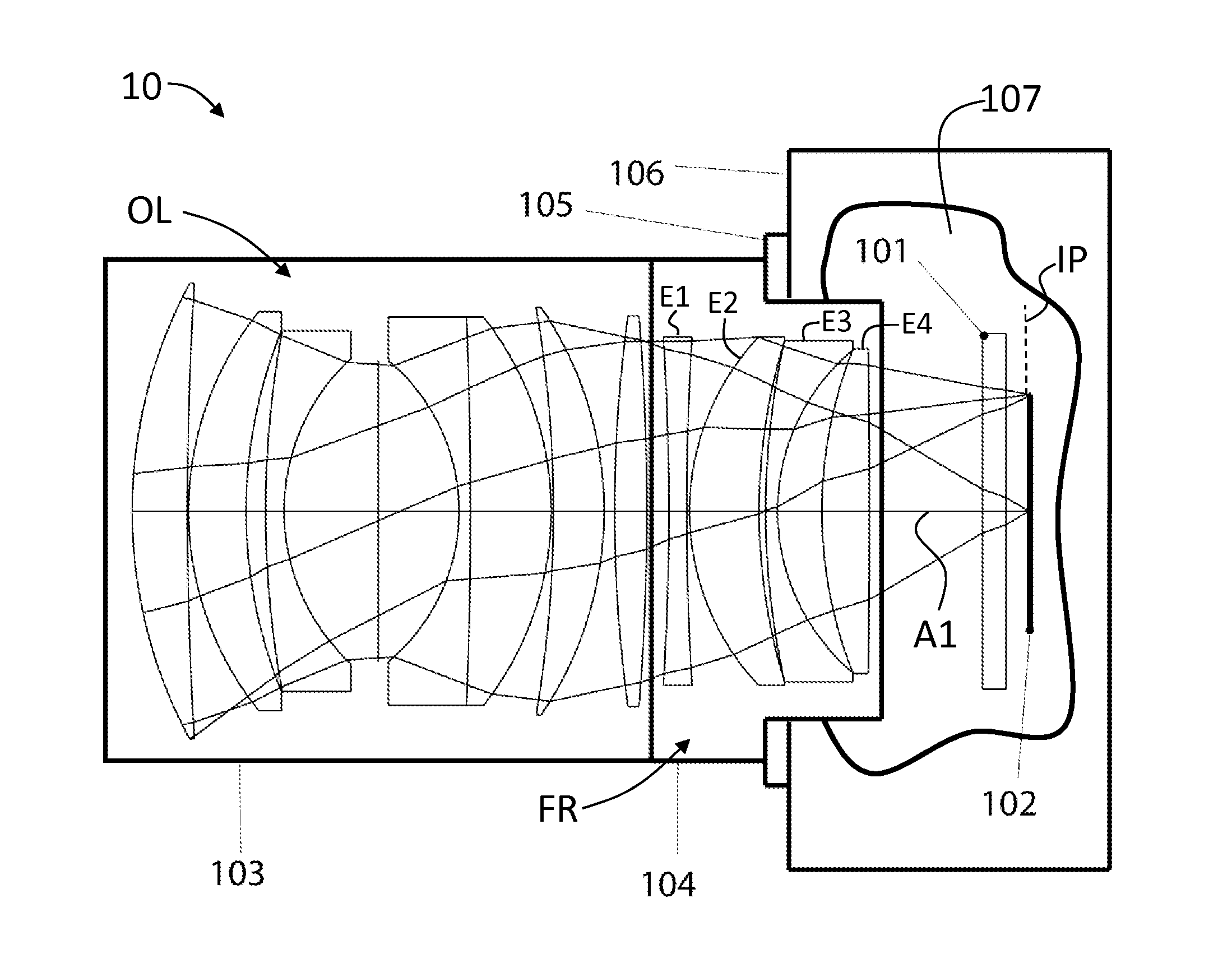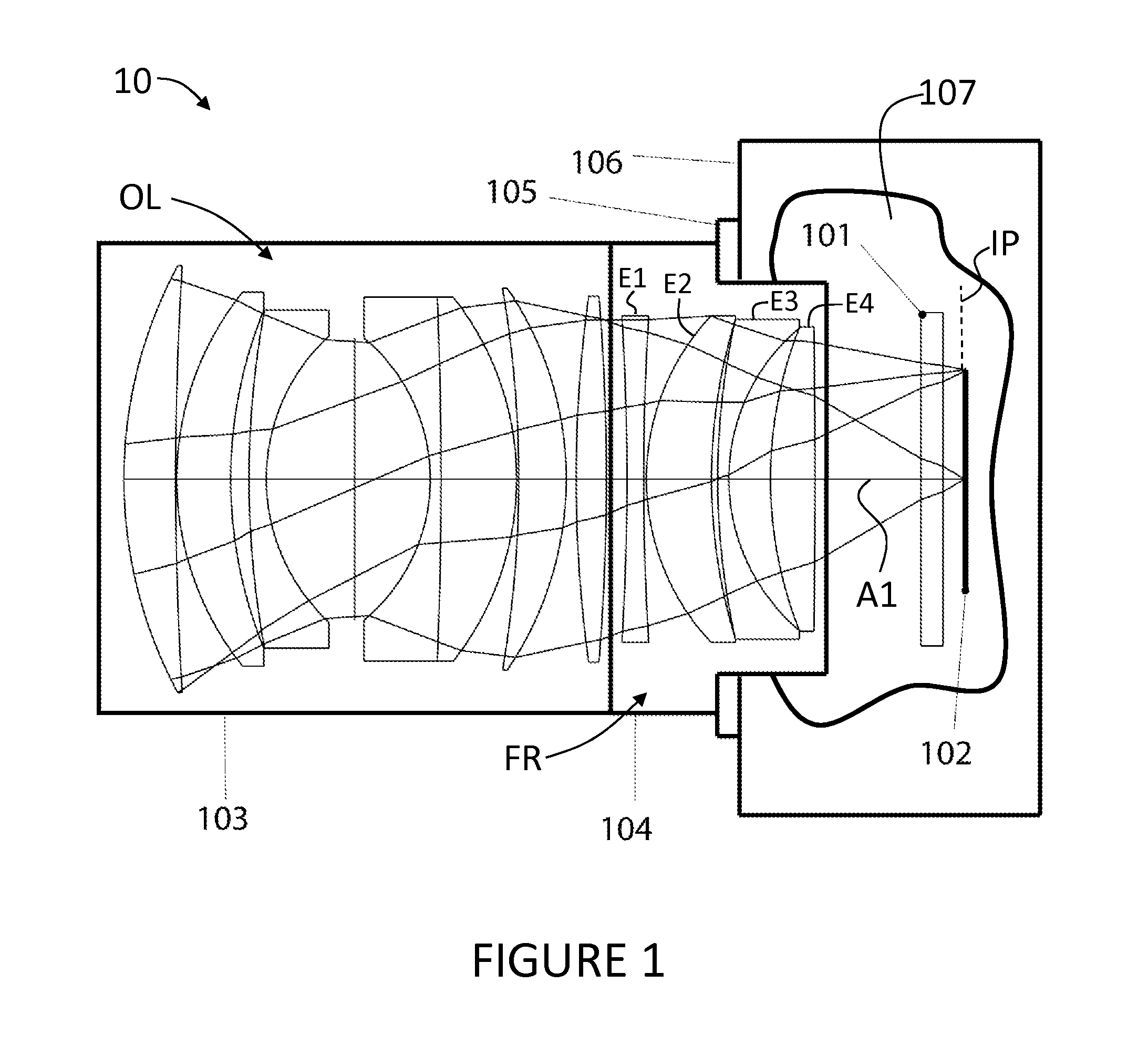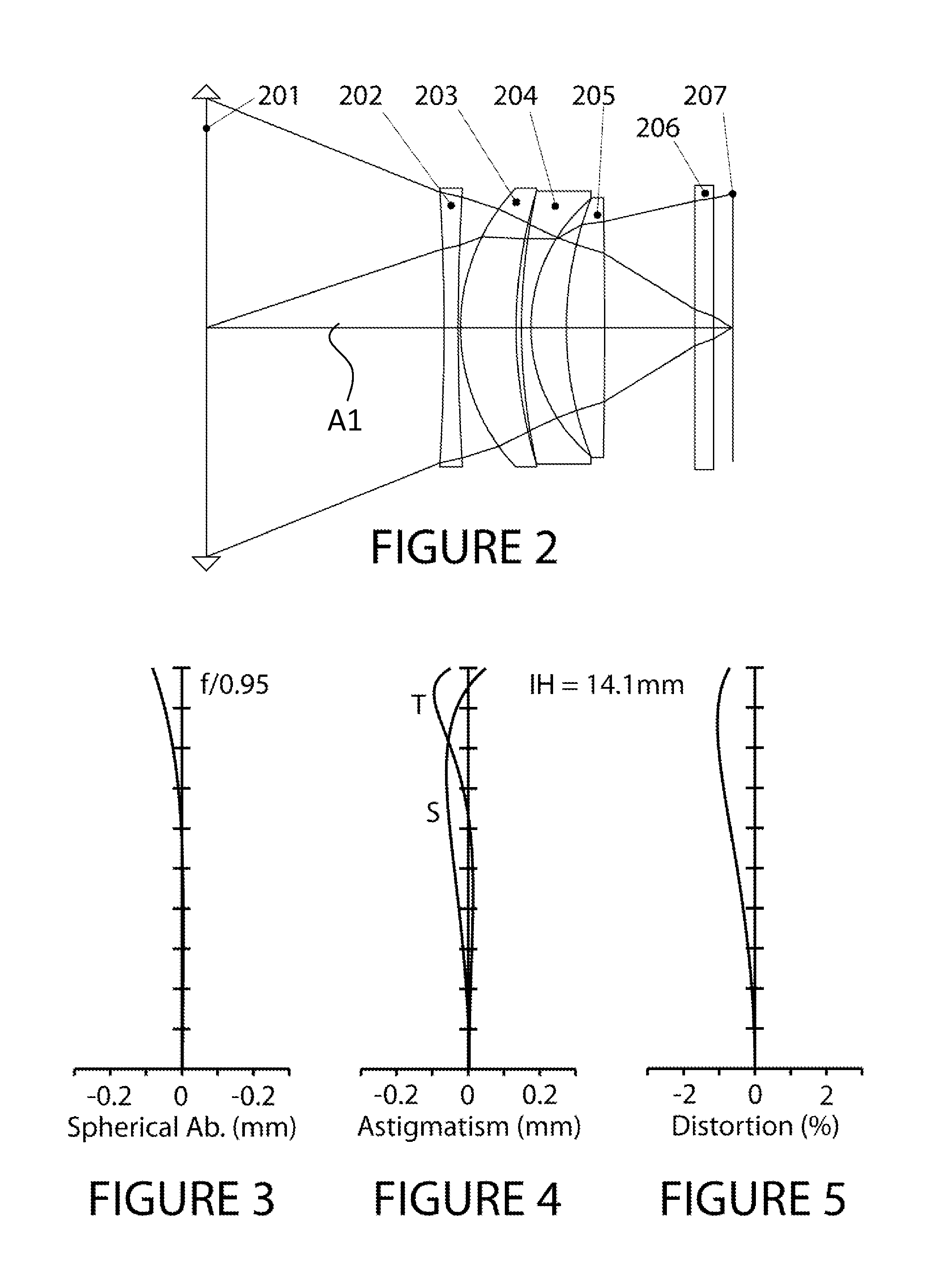Optical attachment for reducing the focal length of an objective lens
a technology of optical attachment and objective lens, which is applied in the field of optical attachment for reducing the focal length of an objective lens, can solve the problems of reducing the “speed” of the objective plus teleconverter system, reducing the optical performance of the system, and magnifying aberration, so as to reduce the focal length and focal ratio, reduce the size of the format, and reduce the effect of the working distan
- Summary
- Abstract
- Description
- Claims
- Application Information
AI Technical Summary
Benefits of technology
Problems solved by technology
Method used
Image
Examples
example 1
[0068]FIG. 2 is a layout of Example 1 of the present disclosure, which is a focal reducing attachment having a focal length of 83.1 mm and a magnification of 0.71×. In order to evaluate optical performance, a paraxial lens 201 having a focal length of 60 mm is placed 25 mm toward the object side of the optical attachment. Although the aperture stop for the attachment is coincident with the paraxial lens for the purpose of aberration evaluation, it may be moved axially over a wide range of values so that it will correspond with the exit pupil location of an attached objective lens. In practice, the attached objective lens will normally determine the actual location of the aperture stop and system exit pupil since it will generally have an iris mechanism. Example 1 is designed to be compatible with a wide range of objective lens exit pupil distances.
[0069]The focal reducing attachment itself comprises four optical elements in order from the object side to the image side: 1) a weak neg...
example 2
[0075]FIG. 6 is a layout of Example 2 of the present disclosure, which is a focal reducing attachment having a focal length of 102.6 mm and a magnification of 0.71×. In order to evaluate optical performance, a paraxial lens 601 having a focal length of 60 mm is placed 24 mm toward the object side of the optical attachment. As with Example 1, the aperture stop for the attachment is coincident with the paraxial lens for the purpose of aberration evaluation, but it may be moved axially over a wide range of values so that it will correspond with the exit pupil location of an attached objective lens. In practice, the attached objective lens will normally determine the actual location of the aperture stop and system exit pupil since it will generally have an iris mechanism. Example 2 is designed to be compatible with a wide range of objective lens exit pupil distances.
[0076]The focal reducing attachment itself comprises four optical elements in order from the object side to the image side...
example 3
[0082]FIG. 10 is a layout of Example 3 of the present disclosure, which is a focal reducing attachment having a focal length of 84.6 mm and a magnification of 0.71×. In order to evaluate optical performance, a paraxial lens 1001 having a focal length of 60 mm is placed 25 mm toward the object side of the optical attachment. Although the aperture stop for the attachment is coincident with the paraxial lens for the purpose of aberration evaluation, it may be moved axially over a wide range of values so that it will correspond with the exit pupil location of an attached objective lens. In practice, the attached objective lens will normally determine the actual location of the aperture stop and system exit pupil since it will generally have an iris mechanism. Example 3 is designed to be compatible with a wide range of objective lens exit pupil distances.
[0083]The focal reducing attachment itself comprises four optical elements in order from the object side to the image side: 1) a weak n...
PUM
 Login to View More
Login to View More Abstract
Description
Claims
Application Information
 Login to View More
Login to View More - R&D
- Intellectual Property
- Life Sciences
- Materials
- Tech Scout
- Unparalleled Data Quality
- Higher Quality Content
- 60% Fewer Hallucinations
Browse by: Latest US Patents, China's latest patents, Technical Efficacy Thesaurus, Application Domain, Technology Topic, Popular Technical Reports.
© 2025 PatSnap. All rights reserved.Legal|Privacy policy|Modern Slavery Act Transparency Statement|Sitemap|About US| Contact US: help@patsnap.com



